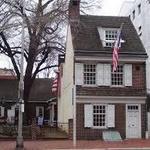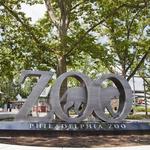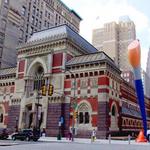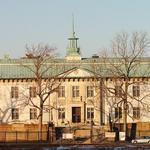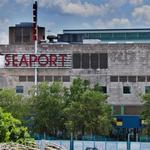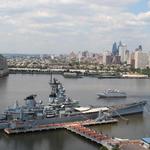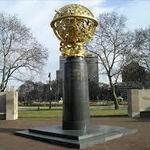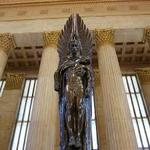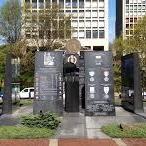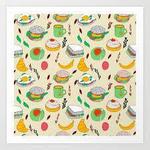Jessica & Sam

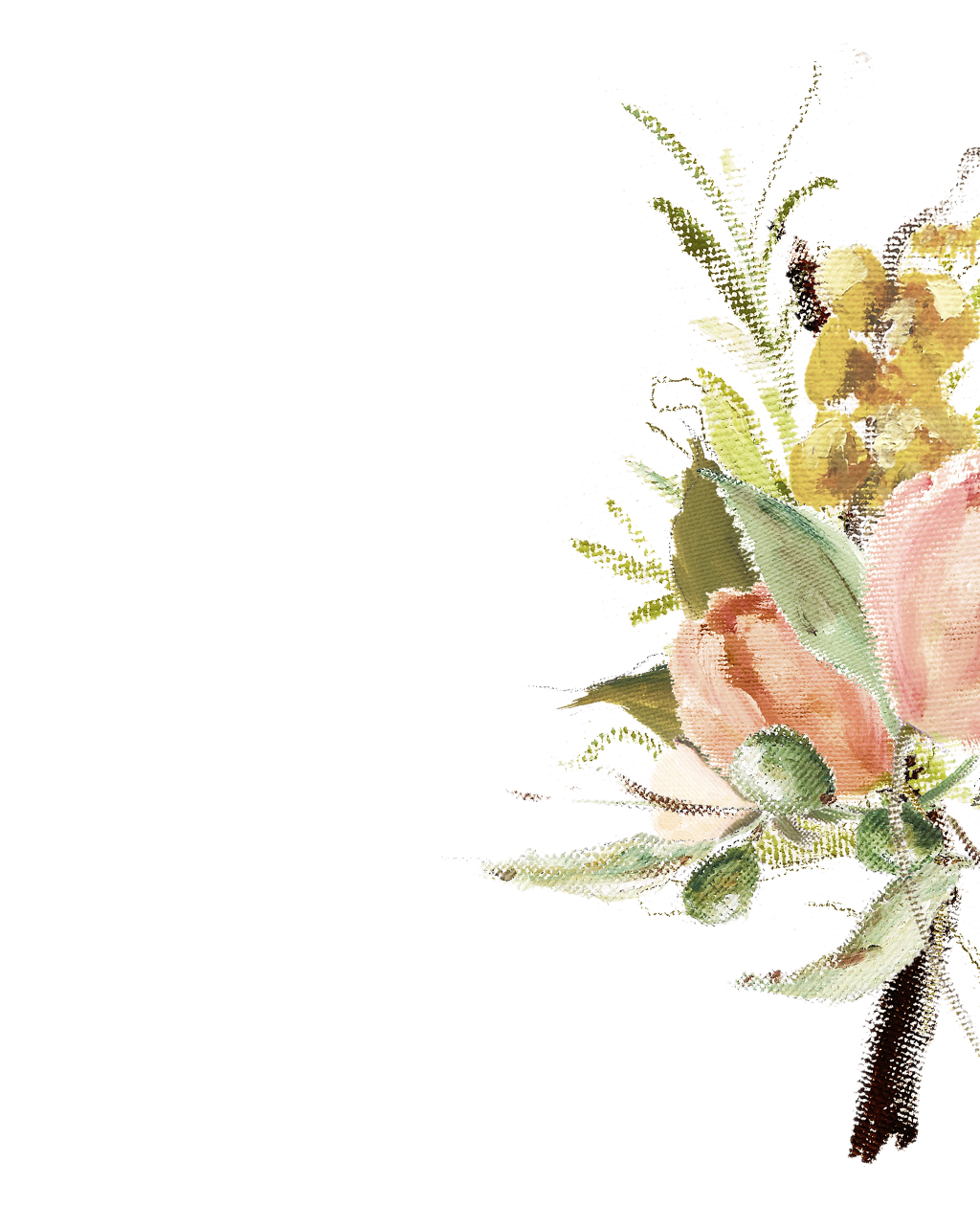
Things To Do

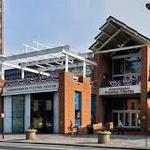
Independence Hall Visitors Center
In addition to a number of small exhibits, this is where you would need to go to pick up your tickets to tour Independence Hall. We highly recommend, as with any sites of interest, checking the website and calling well in advance if you want to get a tour.
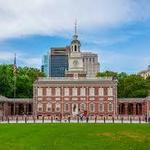
Independence Hall
This is where the United States Declaration of Independence and the United States Constitution were debated, adopted, and signed by the Founding Fathers. It is now the centerpiece of the Independence National Historical Park.
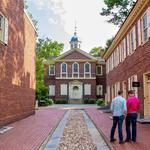
Carpenters' Hall
Carpenters' Hall was a key meeting place in the early history of the United States. The First Continental Congress met here in 1774 and it was the location of the Pennsylvania Provincial Conference in June 1776. Their proceedings officially declared the Province of Pennsylvania's independence from the British Empire and established the Commonwealth of Pennsylvania, mobilized the Pennsylvania militia for the American Revolutionary War, set up the machinery for the Pennsylvania Provincial Convention (July 15 – September 28, 1776) which framed the Pennsylvania Constitution of 1776, and enabled the United States Declaration of Independence to proceed. It was briefly occupied in 1777 by the British Army during the war.
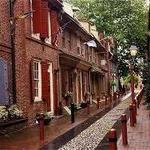
Elfreth's Alley
Elfreth's Alley maintains the claim of being the oldest residential street in the United States. It dates back to 1702 when two blacksmiths surrendered portions of their land in order to create an alleyway that led to the river. The current Elfreth's Alley houses were built between 1728 and 1836 and it stands to reason that if you walk down the alley, you will tread on some of the same cobblestones as some of the Founding Fathers.
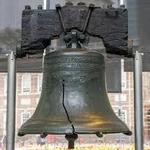
Liberty Bell
The Pennsylvania Assembly had the Liberty Bell made in 1751 to mark the 50th anniversary of William Penn's 1701 Charter of Privileges, which served as Pennsylvania's original Constitution. In 1777, the Bell was removed from Philadelphia under armed guard (some contend that it was transported in a manure cart) to Allentown to be hidden in a church for fear that the British would use it to make cannons. It came back to Philadelphia the following year, hopefully after a good scrub. The Liberty Bell literally cracked up in February 1846, when it was rung on Washington’s birthday, and then stopped ringing due to the damage. Recently discovered just north of where the Liberty Bell sits today is the President's House Site. It is the footprint of where Washington and Adams worked from and resided with their families during their respective administrations (1790-1800). Benedict Arnold also lived here from 1778-9. During which, he began his treasonous correspondence with the British.
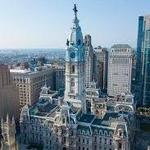
Philadelphia City Hall
- William Penn, the founder of the Province of Philadelphia in 1681, stands at the top of City Hall, not Benjamin Franklin. - A long-held “gentlemen’s agreement” among city developers ensured that no building in Philadelphia would reach past the tip of Penn’s hat at 548 feet. But in 1987, the 945-foot One Liberty Place opened to overtake City Hall in the Philly skyline that brought about the Curse of Billy Penn that wasn't broken until 2008. - It is the largest municipal building in the U.S and while it is taller than the U.S. Capitol Building, it's mere 14.5 acres of total floor space is less than the Capitol’s 16.5 acres. - Constructed of brick, marble, and granite, with no steel or iron framing, City Hall is the tallest masonry building in the world and one of the largest overall.
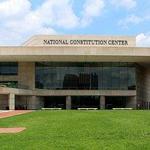
National Constitution Center
America’s leading platform for constitutional education and debate, fulfilling its congressional charter “to disseminate information about the U.S. Constitution on a nonpartisan basis in order to increase awareness and understanding of the Constitution among the American people.”
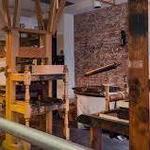
Franklin Court Printing Office
A complex of museums, structures, and historic sites opened in 1976 as part of the United States Bicentennial celebration, it is located at the site where Benjamin Franklin had his Philadelphia residence from 1763 to his death in 1790. The site consists of the archaeological remnants of the Benjamin Franklin's house and nearby buildings, "ghost" reconstruction of the form of the house and print shop, an underground museum focused on Franklin, and historic structures facing Market Street, including what are now a working post-office (which is actually where we mailed our invitations from!) and printing-shop.
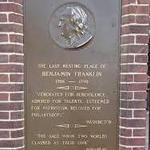
Benjamin Franklin's Grave
Located in Christ Church Burial Ground, this is the final resting place of the prolific statesman / diplomat / revolutionary / inventor / scientist with his wife, Deborah. Benjamin Rush, Francis Hopkinson, Joseph Hewes and George Ross, four other signers of the Declaration of Independence, are also buried on the grounds nearby It has become tradition to lay pennies on his grave.
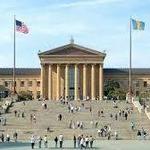
Philadelphia Museum of Art
Home of the "Rocky Steps", the art museum was originally chartered in 1876 for the Centennial Exposition in Philadelphia. The main museum building was completed in 1928 on Fairmount, a hill located at the northwest end of the Benjamin Franklin Parkway at Eakins Oval.
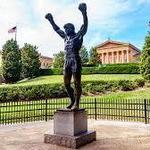
Rocky Statue
In 1980, Sylvester Stallone commissioned artist A. Thomas Schomberg to create the statue of the fictitious pugilist. Today, this iconic statue resides at the Philadelphia Museum of Art, adjacent to the famous Rocky Steps, where, from the top, you can drink in a spectacular view of the city as you catch your breath.
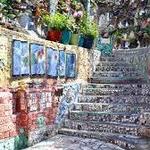
Philadelphia's Magic Gardens
This is a non-profit organization, folk art environment, and gallery space that spans three city lots and has a large outdoor labyrinth. This beautiful and bizarre incorporation is the largest work created by mosaic artist Isaiah Zagar.
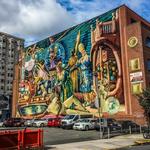
Mural Arts Philadelphia
Responsible for the creation of over 1.000 murals in Philadelphia since 1986 through a coordinated collaboration between professional artists and prosecuted graffiti writers to create new murals. You are able to schedule a tour with them directly or conduct your own self-guided tour (https://www.muralarts.org/self-guided/).
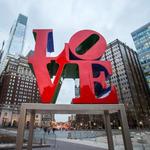
LOVE Sculpture
LOVE is a pop art image created by American artist Robert Indiana in the 60's. It was first rendered into sculpture in 1970. One of these sculptures was placed in the John F Kennedy Plaza park near City Hall in 1976 as part of the United States Bicentennial celebration, earning it the nickname that it is commonly referred to as today, Love Park. While Love Park is under construction, a replica of the sculpture can be found on the University of Penn's campus near 36th Street and Locust Walk.
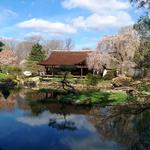
Shofuso Japanese House and Garden
Shofuso (translated: Pine Breeze Villa), is a traditional 17th century-style Japanese house and garden. It was constructed in 1953 using traditional Japanese techniques and materials imported from Japan as a gift to American citizens to symbolize post-war peace and friendship between the two countries. It is located in Philadelphia's West Fairmount Park on the site of the Centennial Exposition of 1876, which was the first official World's Fair to be held in the United States. It lasted from May 10 to November 10, 1876 and celebrated the 100th anniversary of the signing of the Declaration of Independence.
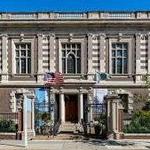
The Mütter Museum at The College of Physicians of Philadelphia
Not for the faint of heart (or stomach), this somewhat macabre, yet fascinating, collection contains anatomical and pathological specimens, oddities, wax models, and antique medical equipment. In mid 2019, the Mutter prophetically opened it's exhibit "Spit Spreads Death: The Influenza Pandemic of 1918-19 in Philadelphia" and followed that up November 19, 2019 with "Going Viral: Infections through the Ages".
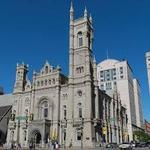
Masonic Temple
Serving as the headquarters for the Grand Lodge of Pennsylvania, Free and Accepted Masons, this Temple was designed in the medieval Norman style. The ten ton granite cornerstone was leveled on June 24, 1868. The ceremonial gavel used on that day was the same gavel used by President George Washington in leveling the cornerstone of the nation's Capitol building in 1793. This meticulously intricate and ornate structure was designated a National Historic Landmark in 1985
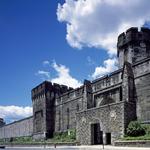
Eastern State Penitentiary
At its completion in 1829, this former prison was the largest and most expensive public structure ever erected in the United States. This innovative wagon wheel design quickly became the model for more than 300 prisons worldwide and refined the revolutionary system of separate incarceration which emphasized principles of reform rather than punishment. You can visit voluntarily today, but before it closed in 1971 it held many of America's most notorious lawbreakers, including "Slick Willie" Sutton and "Scarface" Al Capone.
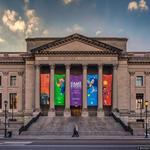
The Franklin Institute
This science museum is the center of science education and research in Philadelphia. In addition to its planetarium, it houses the Benjamin Franklin National Memorial and is named after the American scientist and statesman.
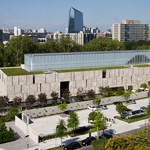
Barnes Foundation
The Barnes Foundation is an art collection and educational institution promoting the appreciation of art and horticulture. Originally established in Merion, PA in 1922, the art collection moved to its new building in Philadelphia on May 19, 2012. One of the world's greatest collections of impressionist, post-impressionist & modern art comprised of more than 4,000 objects, including over 900 paintings, estimated to be worth about $25 billion.
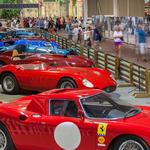
Simeone Foundation Automotive Museum
Assembled over the course of 50 years, this is one of the world’s greatest collections of racing sports cars. Their Collection contains over 75 historically significant cars including Ferrari, Alfa Romeo, Bugatti, Mercedes, Jaguar, Bentley, Porsche, Aston Martin, Corvette, Ford and more.

Gloria Dei Old Swedes Episcopal Church
Gloria Dei Church, known locally as Old Swedes', was built between 1698 and 1700, making it the oldest church in Pennsylvania and second oldest Swedish church in the United States after Holy Trinity Church (Old Swedes) in Wilmington, Delaware.
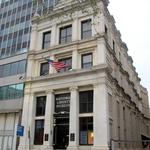
National Liberty Museum
This museum opened to the public in January 2000. The museum states that it is an independent learning and exhibit center dedicated to preserving America's heritage of freedom by encouraging people to find their own place in the story of liberty.
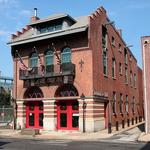
Fireman's Hall Museum
As a tribute to a long history of firefighting in Philadelphia (Benjamin Franklin founded the first volunteer fire company called The Union Fire Company in 1736), this 1902 restored firehouse displays photographs, prints. vintage firefighting tools & machines.
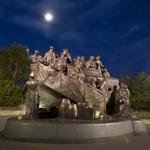
Irish Memorial
In 1845, Ireland's potato crop failed due to potato blight, beginning a seven-year stretch of starvation and privation. As a result of this and the fact that Ireland was exporting grain rather than distributing it to its hungry masses (because, profit), nearly one million died and another million emigrated to other countries, many to the US. We call this period the Great Potato Famine; in Irish it is “an Gorta Mór” (the Great Hunger). This memorial commemorates those who perished due to the blight, politics, and the fact that an abundant amount of food was being shipped elsewhere. It also honors those who left behind everything they knew in the hopes of making a better life for themselves and providing for their families back home in Ireland. The sculpture, with life-sized figures depicting departure and arrival from Ireland and the mourning of the dead, cannot be fully appreciated from any one angle; visitors must walk around it to see every detail.
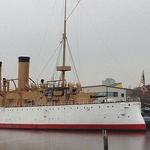
USS Olympia
A protected cruiser that saw service in the US Navy from her commissioning in 1895 until 1922 is the oldest steel American warship still afloat. 1898: Served as a flagship of Commodore George Dewey at the Battle of Manila Bay during the Spanish–American War. Before World War I: Served as a training ship for naval cadets and as a floating barracks in Charleston, SC. 1917: Mobilized again for war service, patrolling the American coast and escorting transport ships. After World War I: Participated in the 1919 Allied intervention in the Russian Civil War by cruising in the Mediterranean and Adriatic Seas to promote peace in the unstable Balkan countries. 1921: Carried the remains of World War I's Unknown Soldier from France to Washington, D.C., where his body was interred in Arlington National Cemetery. 1922: Decommissioned for the last time in December 1922 and placed in reserve. 1957: Navy ceded its title to the Cruiser Olympia Association and was turned into a museum.
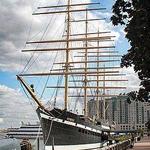
Moshulu
Moshulu is a four-masted steel barque, built as Kurt at Port Glasgow in Scotland in 1904. The largest remaining original windjammer, she is currently a floating restaurant docked in Penn's Landing. Kurt was sailed to Oregon on the outbreak of World War I, then laid up in Astoria until being seized when the States entered the war in 1917. She was first renamed Dreadnought ("one who fears nothing"), then, renamed the Moshulu (which had the same meaning in the Seneca language). Between 1917 and 1920, Moshulu was owned by the U.S. Shipping Board and carried wool and chrome between North America, Manila and Australia.
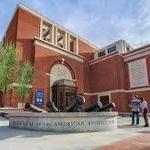
Museum of the American Revolution
This museum was dedicated to telling the story of the American Revolution. It opened to the public on April 19, 2017, the 242nd anniversary of the first battles of the war, at Lexington and Concord, on April 19, 1775.
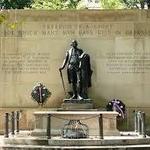
Tomb of the Unknown Soldier
The Tomb of the Unknown Revolutionary War Soldier, also known as the Tomb of the Unknown Soldier of the American Revolution, is a war memorial located within Washington Square, one of the five public parks drawn up by William Penn in his 1682 blueprint for Philadelphia.
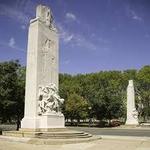
Civil War Soldiers' and Sailors' Monument
Even while the nation was engaged in World War I, Philadelphia decided to commemorate the Civil War and commissioned artist Hermon Atkins MacNeil (1866-1947). These two pylons, one depicting sailors, the other soldiers, have stood in various locations since their completion in 1927 and mark the entry to Fairmount Park from the city. One of the inscriptions reads: “In giving freedom to the slave, we assure freedom to the free.”
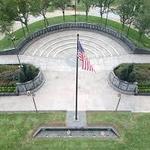
Philadelphia Vietnam Veterans Memorial
This is located at Penn's Landing and was dedicated in 1987. The memorial includes the names of 648 servicemen who were killed in action or listed as missing in action during the Vietnam War from Philadelphia.
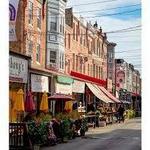
Italian Market
This stretch of specialty stores, mostly food, on either side of the street is lined with outdoor produce vendors and proudly shows off its South Philly plumage. Claudio's is one of our absolute favorite places in the city for artisanal cheeses, charcuterie, olives, antipasto, crostini...we could go on, just know that they have a LOT in terms of their stores and character.
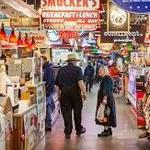
Reading Terminal Market
Offering a diverse assortment of area specialties at 70+ restaurant stands and shops, this indoor market has been a fantastic array of sights and smells since 1892. It's great spot for the weary sightseer to grab a bite. If a libation is in order, find Molly Malloy's in the back.
